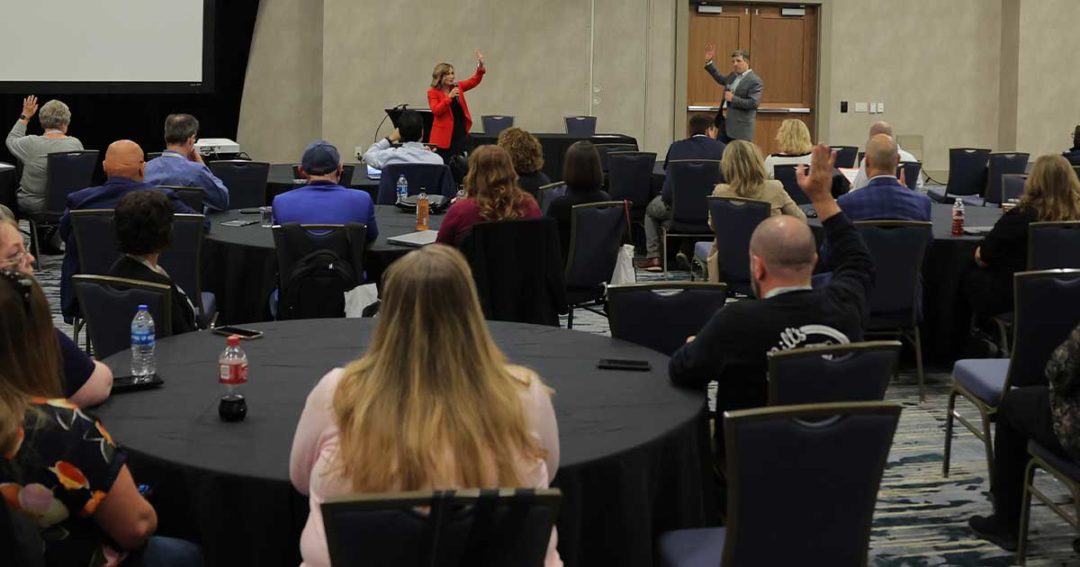
AI, core conversions drive roundtable discussion
Leaders embrace artificial intelligence with controls and security.
Generative artificial intelligence (AI), chatbots, core conversions, and more drove conversations Wednesday during a roundtable discussion at the 2023 CUNA Operations & Member Experience Council and CUNA Technology Council Conference in Denver.
Here’s what leaders had to say.
Generative AI
As it often has over the past year, AI took top billing during the discussion. Moderators Jeffrey Staw, chief innovation officer at Open Technology Solutions and $7.7 billion asset Bellco Credit Union in Greenwood Village, Colo., and Wendy Cleveland, chief operations officer at $2.8 billion asset Sound Credit Union in Tacoma, Wash., gauged attendees’ reactions before saying, “We’re talking about generative AI, but we’re not doing anything about it.”
Several attendees said their credit unions blocked ChatGPT on their networks. However, many are only pausing to develop strategies, adopt policies, and explore possibilities.
“We were concerned about what our teams were doing with ChatGPT, so we chose to block it from corporate devices until we could develop a strategy,” says Jim Phillips, chief information officer at $28 billion asset SchoolsFirst Federal Credit Union in Tustin, Calif. “We’ve upped the visibility and we’re talking about AI, but we’re not in a place where we’re embracing it and leveraging it. We want to, but with controls and security.”
PSECU in Harrisburg, Pa., blocked ChatGPT, but created a waiver process for justifiable use, says Cliff Van Scyoc, vice president of technology at the $8 billion asset credit union.
“This time period has been about investigation, and we’re starting to look for use cases for implementation,” he says. “This is the time. There’s so much opportunity.”
Some attendees’ credit unions have acted on that opportunity, using AI for loan decisions, call center conversations, idea generation, member communication, and more.
Chatbots
The AI explosion had some roundtable participants rethinking chatbots, believing they may have become outdated because there’s no generative aspect. Credit union employees have to input all the data many chatbots spit back out.
Other attendees found that chatbots weren’t as smart as they were led to believe, while some have used chatbots to improve member communication, increase the number of messages they can respond to, and ease the employee burden.
Amy Coe, vice president of deposit operations at $7.5 billion asset Michigan State University Federal Credit Union in East Lansing, has a member-facing chatbot named Fran that answers the number of chats that would equal the work of 30 employees.
“Our numbers were about 33 chats per month; now it’s about 150,” says Tiffany McDowney, director of member services at $513 million asset Topside Federal Credit Union in Dahlgren, Va., which receives about 20 more phone calls per month since implementing a chatbot named Topper in June. “But I don’t feel it’s true AI, as all of the responses come from us. We told Topper what to say. So there’s room for improvement.”
Core conversions
When a credit union considers a core conversion, many roundtable participants agree that data cleanup is essential leading into the process. They also suggest credit unions listen to the vendor, avoid too much customization, and refrain from recreating old processes in the new system.
“No core is perfect. The key thing is getting things as out of the box as you can and not trying to create customization,” says Phillips, adding that credit unions should recognize how taxing core conversions can be on employees. “The key issues are staff motivation and burnout. It takes years of work, and you get diverted from what you should be doing. So keep things fun and incentivize staff with a program.”
Attendees also suggested improving staff buy-in by doing core system demos for employees, offering learning labs, surveying staff, and giving everyone a say in the project.